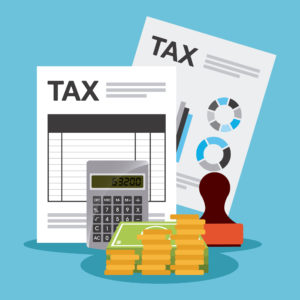
By Rob Cordasco
Special to the Financial Independence Hub (American Content)
With this year’s income-tax-filing deadline finally past, you may have sat back with a sigh of relief, happy to forget about taxes for another year. But that’s a mistake because it’s already time to start thinking about taxes for next year if you hope to lower the amount you ultimately will owe, says Rob Cordasco (www.cordasco.cpa), a CPA and author of A Framework for Growth: Smart Financial and Tax Planning Strategies Throughout the Entrepreneurial Life Cycle.
“People often make the error of only worrying about taxes when it’s time to file,” Cordasco says. “By then, your taxes are pretty much locked in. Although you can’t avoid taxes, you can take steps to minimize them. But this requires proactive planning – estimating your tax liability, looking for ways to reduce it and taking timely action.”
And timely, he says, isn’t waiting until the week before the filing deadline. The real deadline for taxes in the United States – at least for taking action that could save you money – is Dec. 31 of the tax year, he says. (One exception is that you may be able to make a tax-deductible IRA contribution right up to the filing deadline if you meet certain criteria.)
Cordasco says some things to consider that can help you reduce the tax bill you will owe come April 2023, include:
“Bunch” charitable donations
Many people take the standard deduction when they file their taxes because that’s higher than their total itemized deductions. But Cordasco says you might benefit from “bunching” your charitable donations in alternating years, raising the amount you could itemize every other year. Here’s how that would work: If you make a large donation on Jan. 1 and another on Dec. 31, those donations are essentially a year apart, but they fall within the same tax year for itemizing purposes. In effect, you make two years worth of charitable donations in one tax year.
Consider dividend-producing investments
Qualified dividends are taxed at the long-term capital gains tax rate rather than at your higher ordinary-income tax rate, Cordasco says. Meanwhile, investments that produce interest for you generally are taxed at ordinary-income rates. So stocks that pay qualified dividends may be more attractive tax-wise than other income investments, such as CDs and taxable bonds. “But as you make these decisions, you also are going to want to consider non-tax issues, such as investment risk, rate of return and diversification,” Cordasco says.
Use unrealized losses to absorb gains
To determine capital gains tax liability, realized capital gains are netted against realized capital losses, Cordasco says. Both long- and short-term gains and losses can offset one another. “If you cashed in some big gains during the year and want to reduce your tax liability, look for unrealized losses in your portfolio before the year ends and consider selling them to offset your gains,” he says.
Make a Roth conversion
If you have a traditional IRA, consider whether you might benefit from converting some or all of it to a Roth IRA. A conversion can allow you to turn tax-deferred future growth into tax-free growth and take advantage of a Roth IRA’s estate-planning benefits, Cordasco says. “There’s no income-based limit on who can convert to a Roth IRA,” he says, “but the converted amount is taxable in the year of the conversion.” Cordasco says whether a conversion makes sense depends on a number of factors, including your age and whether the conversion pushes you into a higher tax bracket.
Review your W-4 form
The W-4 form tells employers how much income tax to deduct from an employee’s paycheck. But people sometimes have too much, or too little, taken out, Cordasco says, so it’s a good idea to make sure you’re in line with where you need to be. If too little money is being taken out, you could have an enormous tax bill come April 15. If too much is taken out, you will receive a refund, but you might have preferred to have some or all of that money available to you for use during the year.
“Familiarizing yourself with the ins and outs of the tax laws and determining which steps to take isn’t easy,” Cordasco says. “That’s why it’s important to work with an advisor who understands the complexities and is well versed in the actions you can take to save tax.”
 Rob Cordasco (author of A Framework for Growth: Smart Financial and Tax Planning Strategies Throughout the Entrepreneurial Life Cycle, is the founder of Cordasco & Company, P.C., a boutique Certified Public Accounting firm. Cordasco is a CPA with more than three decades of experience. He holds a bachelor’s degree in accounting from Spring Hill College in Alabama.
Rob Cordasco (author of A Framework for Growth: Smart Financial and Tax Planning Strategies Throughout the Entrepreneurial Life Cycle, is the founder of Cordasco & Company, P.C., a boutique Certified Public Accounting firm. Cordasco is a CPA with more than three decades of experience. He holds a bachelor’s degree in accounting from Spring Hill College in Alabama.

